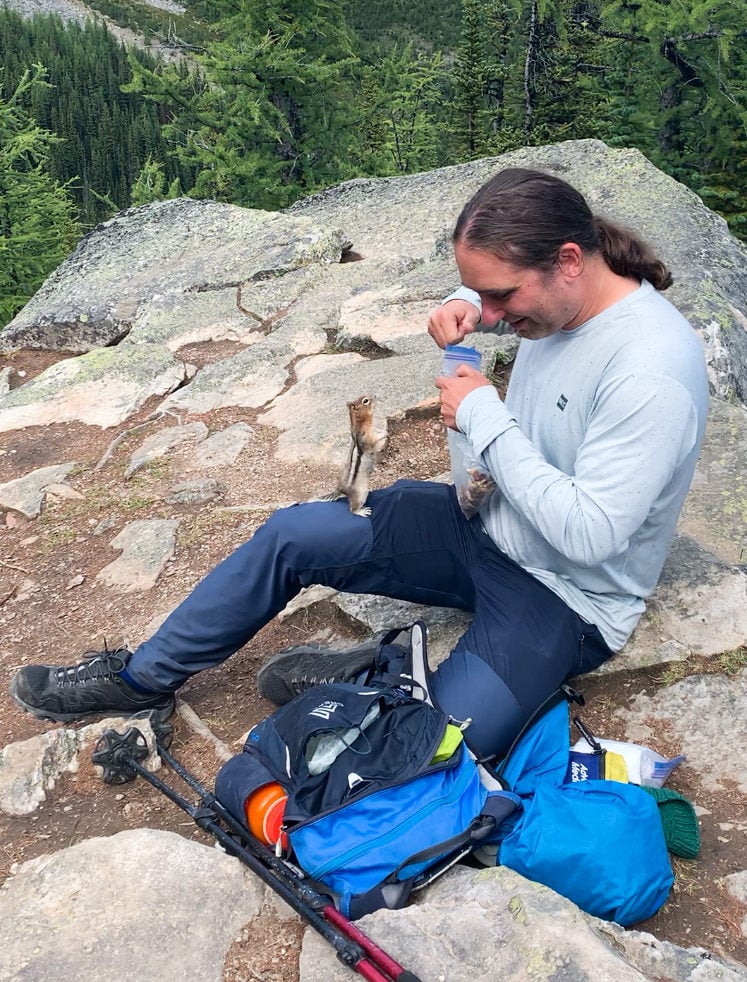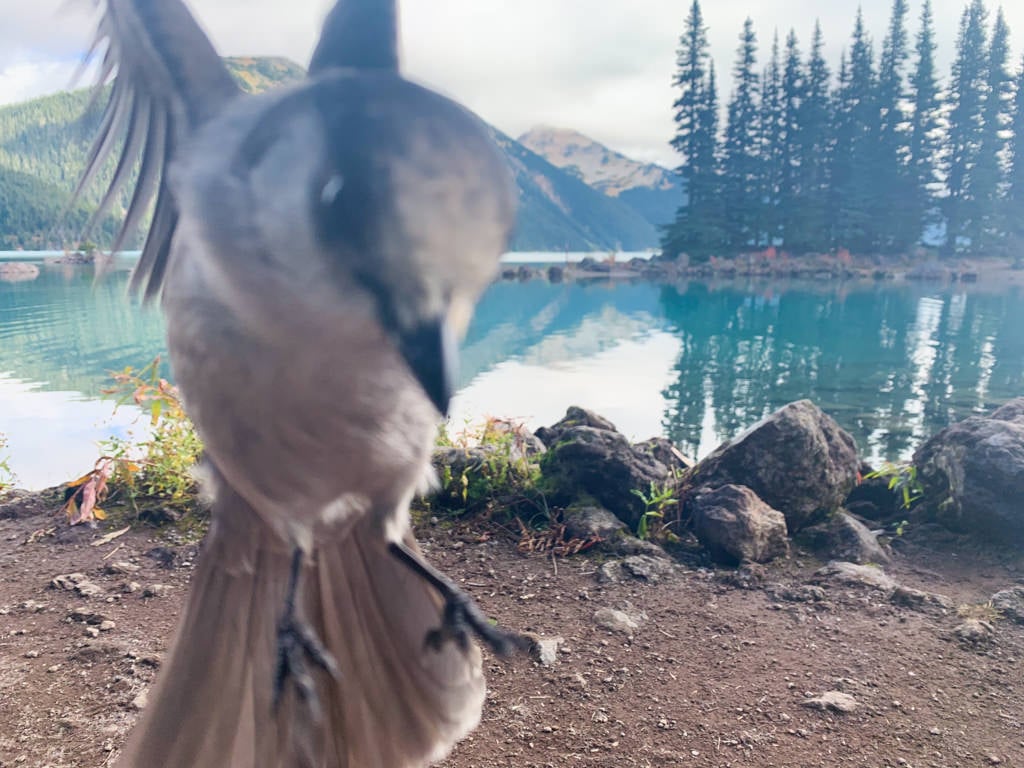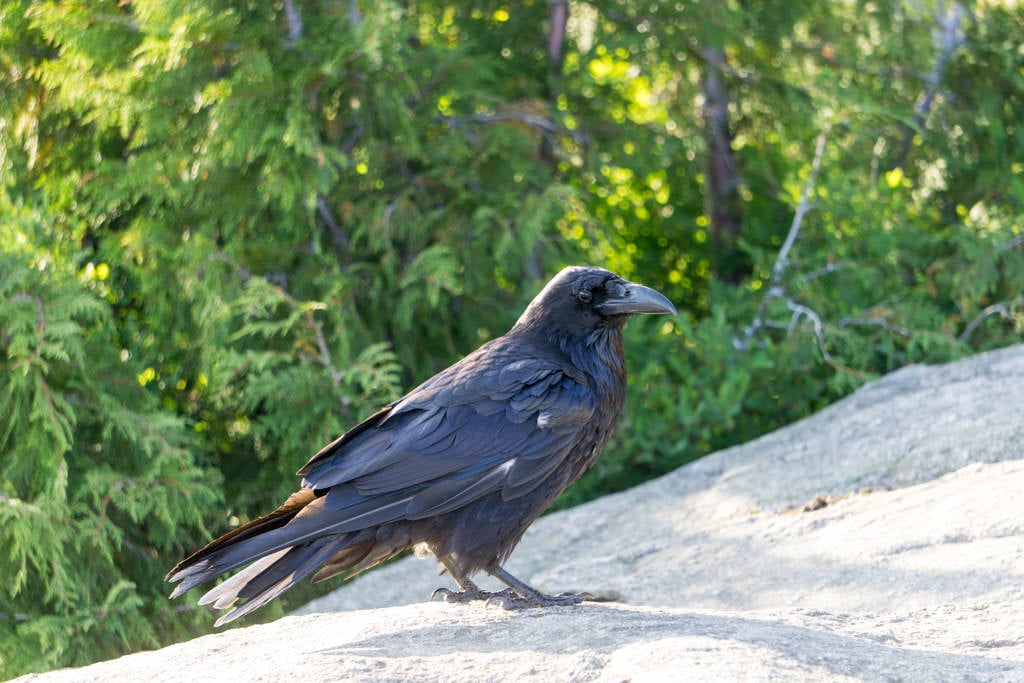6 Reasons Why You Shouldn’t Feed Wildlife
Spotting wildlife in nature is amazing and feeding them can be irresistible and seem to be a good way to make a connection with nature. Unfortunately, actively feeding animals or leaving food or garbage unsecured leads to many negative consequences. Read on to discover six reasons why you shouldn’t feed wildlife, plus tips on how to keep wildlife safe on the trails.
1. Human Food is Not Healthy for Animals
Wildlife have specialized diets so eating human food can lead to malnutrition and other health problems. This includes organic foods and granola bars. The most prominent example of this is the “angel wing” deformity in ducks and geese who are fed bread.

2. Birds Don’t Need to Be Fed
Wildlife has adapted to the environment they live in. Animals are therefore very capable of finding their own food and don’t require our help. The birds and squirrels who live in their natural habitat along hiking trails don’t need to be fed. They have easy access to their natural foods.

3. Feeding Wildlife Can Spread Disease
Feeding can lead to large concentrations of animals in an area, such as at viewpoints. When animals congregate in larger numbers than normal, it’s very easy to spread disease and parasites between them.
As well, human food can harbour bacteria and diseases that aren’t normally found in nature. Some animals, like birds and squirrels cache their food to eat later. Even a little bit of human food can contaminate an entire food cache, spoiling the food or spreading sickness.
4. Wildlife Lose the Ability to Find Their Own Food
If animals are fed a steady diet of handouts from hikers, it alters their behaviour and population dynamics. When humans are absent, the wildlife may starve.

5. Fed Animals can lead to human-wildlife conflicts
Once wildlife learn that people will feed them, they can lose their fear for humans and can appear aggressive towards hikers. Fed animals may chew through tents and backpacks looking for food. They may also harass people and their pets. This can lead to human-wildlife conflicts and even dangerous situations when it involves bears, wolves and other large mammals.
6. It Puts Wildlife in Danger
When smaller animals such as birds are fed, predators and larger mammals are attracted to that area at the same time. Fed animals can become habituated to humans and lose some of their natural fear. When bears, wolves, and cougars become habituated it can result in human-wildlife conflicts that can end with being euthanized by Conservation Officers as relocation is often not an option or unsuccessful. Young wildlife can become orphaned and, in the best-case-scenario, end up at a Wildlife Rehabilitation Centre.
Leaving food or garbage near a road or tossing out an apple core attracts wildlife to the roads, which puts them in danger of vehicle collisions.
How to Keep Wildlife Safe on the Trails
- Never feed animals.
- Pack it in, pack it out. Bring all your trash home with you, including biodegradable items like apple cores, which can attract wildlife. Remember, if it doesn’t grow there, it doesn’t go there.
- Keep trails and campsites clean. Do a sweep after eating to clean up any food scraps or wrappers.
- Store your food and garbage safely. Keep it inside your backpack while hiking or taking breaks. At camp, stash your food in a car trunk or in a secure bear-proof locker.
- Never burn trash in a campfire – bits of food or food smells can remain, which can attract animals.
- When you see animals, give them lots of space. Use the zoom lens on your camera or binoculars to get a closer look. If your presence causes an animal to change its behaviour, it’s time to leave.
- Never touch or hold animals.
- Avoid taking and sharing photos of people feeding or holding animals, including birds. Sharing these images can encourage others to feed wildlife.
- Practice Bear Safety.
Taryn Eyton is a Squamish-based outdoor and adventure travel writer and Leave No Trace Master Educator. She is the founder of the hiking website HappiestOutdoors.ca and the author of Backpacking in Southwestern British Columbia: The Essential Guide to Overnight Hiking Trails (Greystone Books, 2021).

Comments that gratuitously attack or demean individuals or organizations are not acceptable. We reserve the right to remove comments or any other content we deem unacceptable in our sole discretion, including removing user names and profile pictures. For our full website terms and conditions including our legal guidelines for user postings and comments on www.vancouvertrails.com, please see our Terms of Use and Privacy Policy.